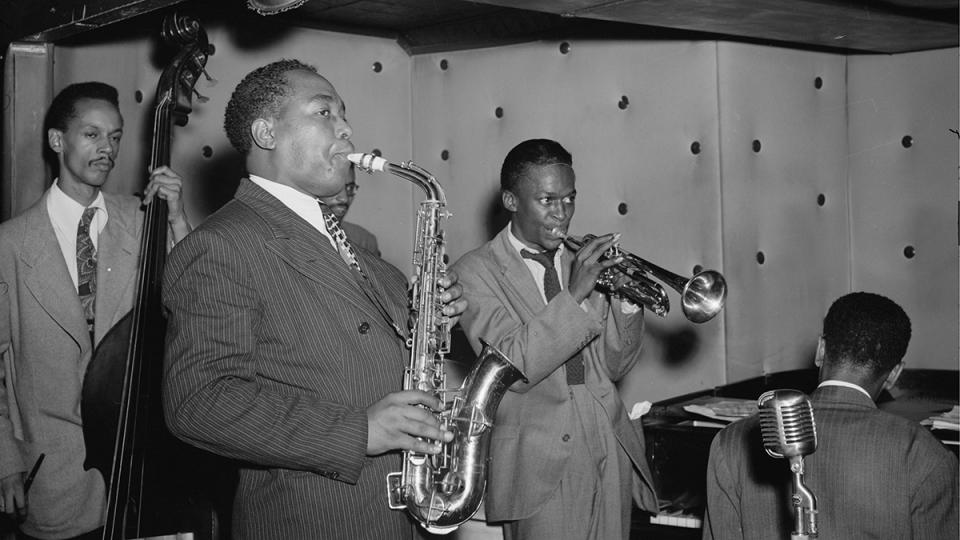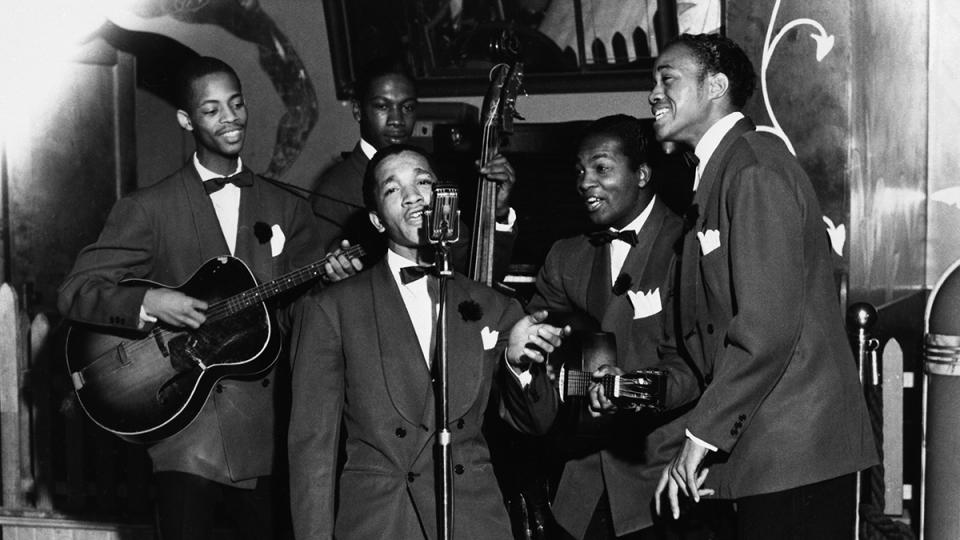How This New York Restaurant Is Carrying on the Legacy of the Harlem Renaissance

- Oops!Something went wrong.Please try again later.
- Oops!Something went wrong.Please try again later.
- Oops!Something went wrong.Please try again later.
- Oops!Something went wrong.Please try again later.
Before Malcolm Little became Malcolm X, John Sanford adopted the stage name Redd Foxx, and most of the world knew Charlie Parker as Bird, they could be found at Jimmy’s Chicken Shack in Harlem. Back in the late 1930s and early 1940s they weren’t speaking or performing, they were merely punching a clock. All three were employees at Jimmy’s, a restaurant and nightclub that became a favorite hangout for locals and celebrities alike who wanted to hear some of America’s biggest jazz stars.
And while that was happening out front, the people who would become icons in the worlds of politics, music, and comedy were congregating in the back, washing dishes and waiting tables.
More from Robb Report
Acclaimed Chef Ignacio Mattos Is Walking Away From His Hit N.Y.C. Restaurant
How Hercules Posey, George Washington's Chef, Helped Shape American Cuisine
“Those people, you know, at the end of the day, they became this major, influential [group] in the civil-rights movement, changing what Harlem is right now,” Beejhy Barhany, the chef-owner of Tsion Cafe, which now sits in the former home of Jimmy’s Chicken Shack, told Robb Report.
Barhany has embraced the legacy of Jimmy’s, although she didn’t realize the old jazz joint had been the building’s tenant until after she signed the lease for Tsion Cafe, which opened in 2014. Since then, the Ethiopian restaurant has honored the legacy of the club not through its food (with a plant-based menu, there’s definitely no chicken or steak) but by hosting live music, displaying art by locals, and serving as a general meeting place for Harlem’s Black community.
Finding much information about Jimmy’s isn’t easy, but historical documents show that the restaurant was opened by Jimmy Bacon in the late 1930s. Some six years later, it was one of the hottest spots in town, with an issue of the New York Amsterdam News from February 1942 saying that “when you drop into Jimmy’s Chicken Shack especially in the wee hours of the morning you will find the place crowded with would-be customers, patiently waiting for a table. Often they are disappointed for scarcely a night passes that people are not turned away.” Hollywood stars—mostly white—would go straight to the club after their train pulled into the city, with celebs like Lana Turner making an appearance.
It was around that time that Malcolm, Parker, and Foxx held jobs at Jimmy’s. Malcolm and Foxx worked together in the kitchen and struck up a friendship, which they would both speak fondly of later in their lives. Parker, meanwhile, took his first non-music job for pay as a dishwasher, working midnight to 8 a.m., according to a 1989 article in The Threepenny Review. From the kitchen, he’d listen to Art Tatum playing out front. When Tatum would sneak into the kitchen for a sip of whiskey between sets, Parker would be too nervous to say anything—their relationship, rather, was a silent one, with Parker using his impressive musical memory to remember what he had heard.

“Art Tatum was an astonishing piano player,” Scott DeVeaux, a professor of critical and comparative studies in the University of Virginia’s music department, told Robb Report. “I can’t imagine what it would be like being in a place where you could just hear him play all the time, even if you had to be back washing dishes and only hearing on some occasions. But it’s from that experience that Charlie Parker came up with his ideas about how to introduce more complicated harmonies into his improvising.”
When Tatum’s gig at Jimmy’s ended, Parker quit. He’d soon go on to become one of America’s greatest saxophonists and a creator of bebop.
While spaces like Jimmy’s were important as jazz clubs and hubs of the Harlem Renaissance, then, they were also serving as more than that. Jimmy’s was a place where Black New Yorkers came together behind the scenes, setting down the stepping stones that would lead them into their future. Sure, people like Tatum and Billie Holiday played there at the peak of their powers, but unknown Parkers, Foxxs, and Malcolms were gaining new perspectives and worldviews by taking in the scene while simply trying to make a dollar.
It’s that legacy that Barhany is working to carry on at Tsion Cafe. There’s the live-performance aspect, but there’s also the fact that she wants her restaurant to serve as a place where the Harlem community can come together, where they can feel nourished by both the comforting shiro wat (ground chickpeas simmered with berbere, onion, garlic, tomatoes, and ginger) and the knowledge that the greats who came before them took up the exact same space.

“We are kind of carrying on the torch of Black excellence, Black culture, Jewish culture, and the legacy of the Harlem Renaissance,” Barhany said. “We are stepping on the shoulders of those great heroes that were majorly influential in the change of civil rights or Black culture as a whole.”
Nowadays, Tsion Cafe sees tour groups and individuals come in to honor the history that took place at 763 Saint Nicholas Avenue. Even people like Les Payne, the author of the Pulitzer Prize–winning Malcolm X biography The Dead Are Arising, stopped in while working on his book. His daughter Tamara, who completed the tome after Payne’s death, continues to come into the restaurant.
Many spaces that were used as jazz venues in the early 1900s are no longer around, DeVeaux said, the buildings knocked down and turned into high-rises—the victims of gentrification. That makes the old Jimmy’s space even more remarkable: the fact that it still exists, and that it still exists as a restaurant and performance space.
Barhany agrees, and said she would love to work with the historical preservation society to install a plaque or statue outside Tsion Cafe, something that makes permanent the history and meaning of the Sugar Hill address—and something concrete that all the people who come to honor Jimmy’s can physically connect with. So much has happened in the small basement space over the past century, and it would be a shame if it—like so much else—simply became lost to the annals of history.
Best of Robb Report
Why a Heritage Turkey Is the Best Thanksgiving Bird—and How to Get One
The 10 Best Wines to Pair With Steak, From Cabernet to Malbec
Sign up for Robb Report's Newsletter. For the latest news, follow us on Facebook, Twitter, and Instagram.

